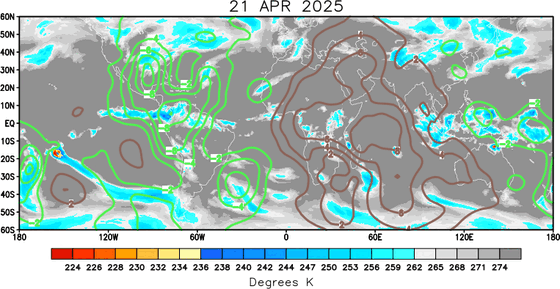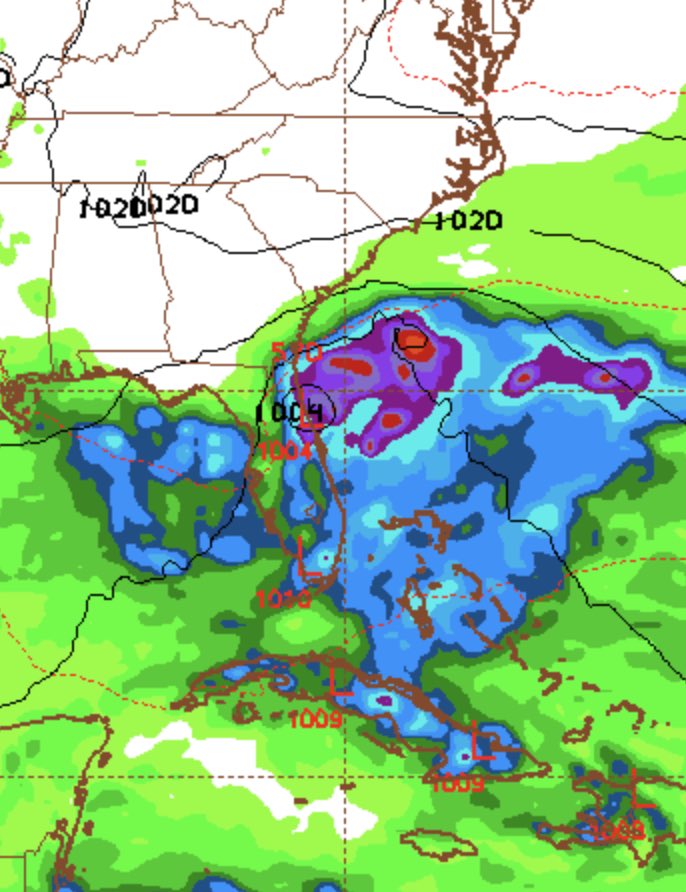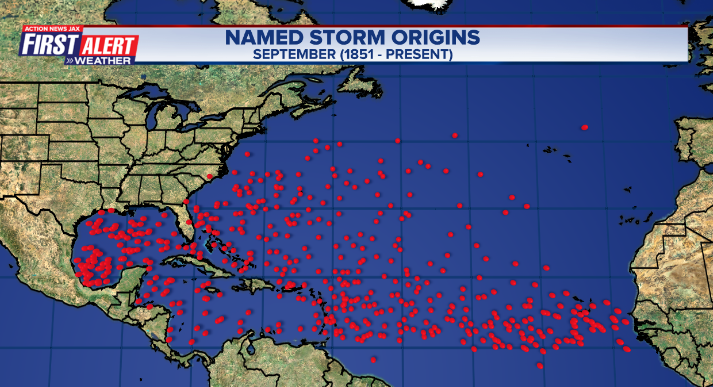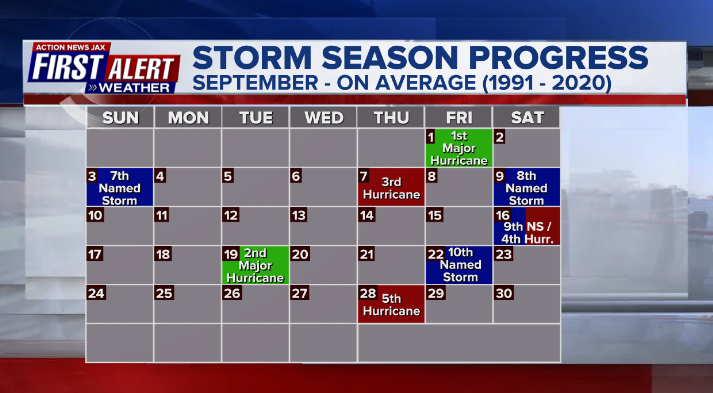Jacksonville, Fl. — The “Buresh Bottom Line”: Always be prepared!.....First Alert Hurricane Preparation Guide... City of Jacksonville Preparedness Guide... Georgia Hurricane Guide.
STAY INFORMED: Get the * FREE * First Alert Weather app
FREE NEWS UPDATES, ALERTS: Action News Jax app for Apple | For Android
WATCH “Preparing for the Storm”
WATCH “The Ins & Outs of Hurricane Season”
READ the First Alert Hurricane Center “Survival Guide”
LISTEN & WATCH “Surviving the Storm” - WOKV Radio & Action News Jax
***** ALWAYS CHECK & RE-CHECK THE LATEST FORECAST & UPDATES! *****
REMEMBER WHEN A TROPICAL STORM OR HURRICANE IS APPROACHING: Taping windows is *not* recommended & will not keep glass from breaking. Instead close curtains & blinds.
Realize the forecast cone (”cone of uncertainty”) is the average forecast error over a given time - out to 5 days - & *does not* indicate the width of the storm &/or where damage that might occur.
*** LOCAL (Jacksonville/NE Fl./SE Ga.) IMPACTS FROM THE TROPICS: None through midweek... but carefully monitoring the potential for low pressure to develop late in the week near the coast of Florida. As for right now - gusty winds, heavy rain, rough seas & surf along with at least a very high rip current risk will impact coastal areas Thu. & especially Friday/Saturday. Depending on the strength of the low, impacts could be more significant & farther inland.
The Atlantic Basin Overview:
** “Lee” was upgraded to a tropical storm last Tue. afternoon & to a hurricane Wed. afternoon & intensified to a Cat. 4 Thu. afternoon & to a Cat. 5 late Thu. evening! before weakening the last several days... & transitioned to a post-tropical low early Sat. before making landfall late Sat. in Nova Scotia.
** The strong tropical wave - ‘96-L’ was upgraded to tropical depression #14 Thu. morning & “Margot” Thu. afternoon then to a hurricane last Mon. afternoon but was declared post-tropical Sunday morning.
** T.D. #15 has formed & developed into “Nigel” over the Central Atlantic....
** A trailing strong tropical wave at a lower latitude closer to Africa has the potential for eventual development...
** Low pressure likely to develop near Florida late week...

(1) The strong tropical wave - ‘95-L’ - that moved off the coast of Africa this past weekend and was upgraded to tropical depression #13 a week ago Tue. morning then to tropical storm “Lee” Tue. afternoon & then to a hurricane Wed. afternoon. The hurricane rapidly intensified Thu. becoming a Cat. 4 last Thu. afternoon then a Cat. 5 later Thu. night creating great hoopla & unwarranted scary headlines. In any case, Lee steadily weakened thereafter until strengthening some again late Sun. into Monday then finally became post-tropical early Saturday before a late afternoon landfall in Nova Scotia. The last NHC advisory was issued Sunday morning.
Lee was the third major (Franklin & Idalia so far) hurricane of the Atlantic season ... the third hurricane of the Atlantic season develops - on average - Sept. 7 (4 so far this year) while the 2nd “major” hurricane average date is Sept. 19.
(2) The very strong tropical wave - ‘96-L’ - was upgraded to t.d. # 14 a week ago Thu. morning over the far Eastern Atlantic & to tropical storm “Margot” late Thu. then to the 5th hurricane of the Atlantic season late last Mon. & then weakened to a tropical storm the last couple days. This tropical cyclone will stay far to the east over the Central & Northern Atlantic while continuing to weaken.
(3) Tropical depression #15 formed over the Central Atlantic Friday & was upgraded to “Nigel” Sat. evening. Nigel is forecast to intensify into a hurricane early to mid-week. But indications are that this tropical cyclone will turn early to the north staying well east of the U.S. coast, even east of Bermuda.
(4) A strong tropical wave will come off the coast of Africa over the next couple days & may slowly develop while moving west.
(5) We’ll also need to watch for possible development near Florida late in the upcoming week. A surface trough of low pressure will develop near & just offshore of the east coast of Florida by Wed. & especially Thu./Fri. Forecast models are unanimous in the development of the trough & have recently come into at least some agreement on low pressure developing very near Florida. The GFS model had been the most insistent & strongest but the European & Canadian models have been following suit, at least to some degree. This is a situation to watch as “in-close” tropical development does fit the pattern with a rather strong high to the north. If the low can stay far enough offshore long enough then a tropical or subtropical system could form.
Regardless of development... nor’easter conditions will begin to unfold Wed. & especially Thu./Fri. possibly lasting into Saturday for coastal NE Fl. & SE Ga. with gusty onshore (out of the east/northeast) flow/winds along with bands of heavy rain, rough seas & surf & dangerous rip currents. Stay up to date on the latest forecasts.
Rainfall forecasts for the next 7 days from the GFS & European model respectively:









“Margot” - weakening & will turn east with some minor impacts - as a post-tropical low - for parts of the Azores mid & late week. The last NHC advisory was issued Sunday morning.


“Nigel” - Nigel developed Sat. evening from t.d. #15 (Friday) from a tropical wave that moved off of Africa last week. Steady & quick intensification into a hurricane is expected but so is an early turn to the north. That’s good news for Bermuda, the U.S. & the Caribbean. Nigel is the 14th named storm of the Atlantic season.... the 10th named storm on avg. develops on Sept. 22nd & 14 named storms is the avg. of a whole season (June 1 - Nov. 30).


Check out the upper oceanic heat content (UOHC) [tropical cyclone heat potential/TCHP] across the SW Atlantic, Gulf & Caribbean. The warmth is very deep. But keep in mind warm ocean temps. alone doesn’t necessarily equate to a “big” hurricane season (need other ingredients & factors to be favorable too) but it’s obvious there is a lot of very warm water at great depths over the Caribbean & Gulf of Mexico stretching eastward all the way into the Central Atlantic:

Velocity potential anomalies - the map below shows “roughly” where the air is rising (green lines) vs. air that is generally descending (brow lines). These “pulses” - strong related to the MJO [Madden-Julian Oscillation] - often correlate with increased tropical cyclone activity. The current pulse over the Pacific should translate eastward & could be located over the Atlantic Basin by late this month into the first 1-2 weeks of Oct. If true, we could expect an uptick in Atlantic tropical development.




Water vapor loop (dark blue/yellow is dry mid & upper level air):


July tropical cyclone origins:
Averages below based on climatology for the Atlantic Basin for August:

Wind shear:




Saharan dust spreads west each year from Africa by the prevailing winds (from east to west over the Atlantic). Dry air - yellow/orange/red/pink. Widespread dust is indicative of dry air that can impede the development of tropical cyclones. However, sometimes “wanna’ be” waves will just wait until they get to the other side of - or away from - the plume then try to develop if other conditions are favorable. In my personal opinion, way too much is made about the presence of Saharan dust & how it relates to tropical cyclones. In any case, the peak of Saharan dust typically is in June & July.

2023 names..... “Ophelia” is the next name on the Atlantic list (names are picked at random by the World Meteorological Organization... repeat every 6 years). Historic storms are retired [Florence & Michael in ’18... Dorian in ’19 & Laura, Eta & Iota in ‘20, Ida in ‘21 & Fiona & Ian in ‘22]). In fact, this year’s list of names is rather infamous with “Katrina”, “Rita” & “Wilma” retired from the ‘05 list & “Harvey”, “Irma”,“Maria” & “Nate” from the ‘17 list. The WMO decided - beginning in 2021 - that the Greek alphabet will be no longer used & instead there will be a supplemental list of names if the first list is exhausted (has only happened three times - 2005, 2020 & 2021). The naming of tropical cyclones began on a consistent basis in 1953. More on the history of naming tropical cyclones * here *.





East Atlantic:





Mid & upper level wind shear (enemy of tropical cyclones) analysis (CIMMS). The red lines indicate strong shear:
Water vapor imagery (dark blue indicates dry air):

Deep oceanic heat content over the Gulf, Caribbean & deep tropical Atlantic. The brighter colors are expanding dramatically as we near the peak of the hurricane season.:

Sea surface temp. anomalies:


SE U.S. surface map:

Surface analysis centered on the tropical Atlantic:

Surface analysis of the Gulf:

Caribbean:

Atlantic Basin wave period forecast for 24, 48, 72 & 96 hours respectively:




East/Central Pacific:





West Pacific:

Global tropical activity:



Cox Media Group











